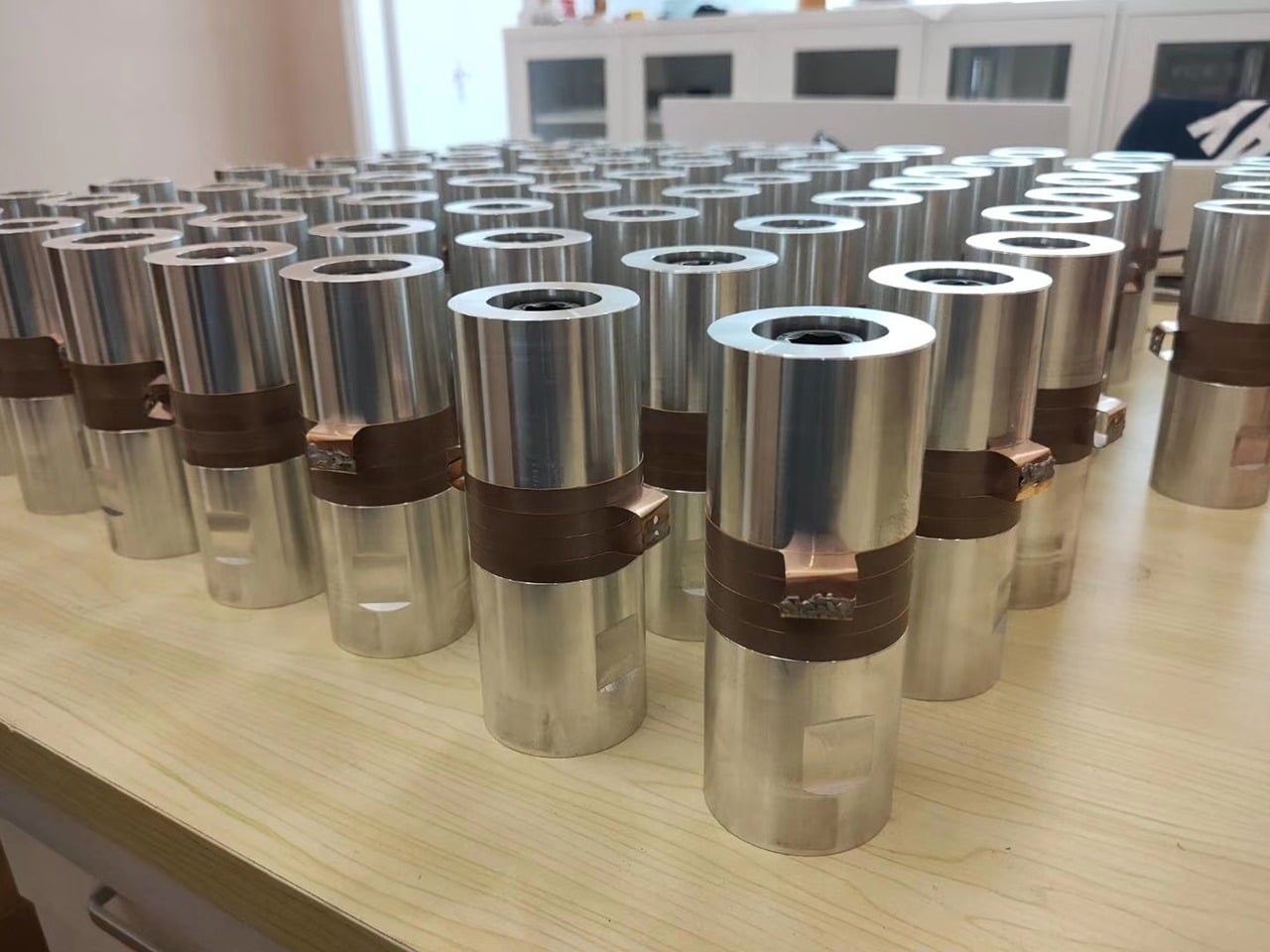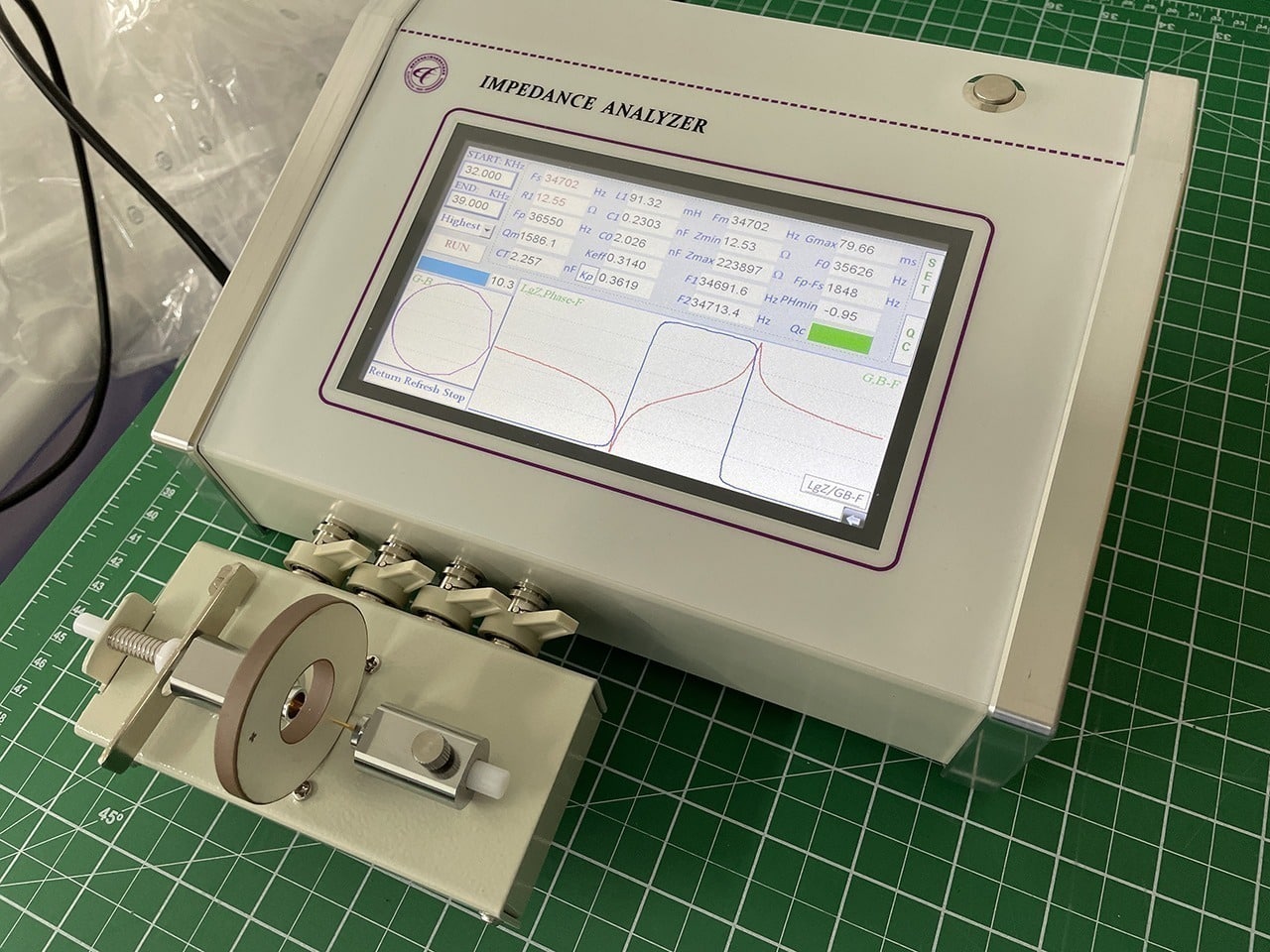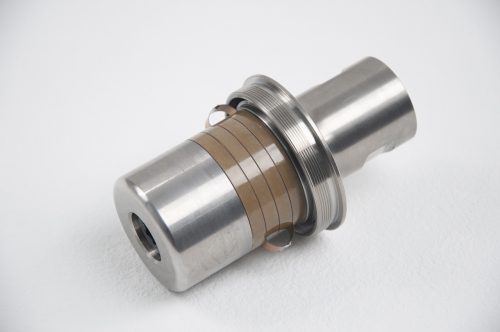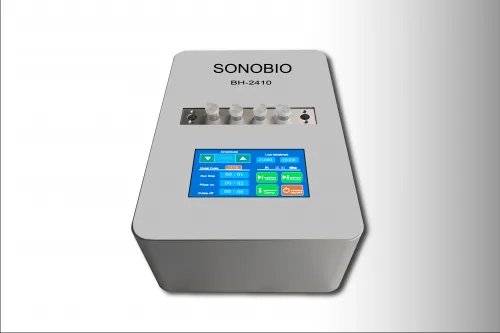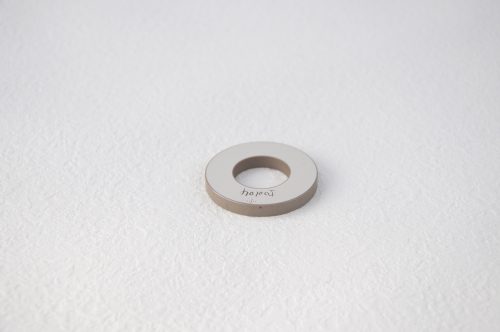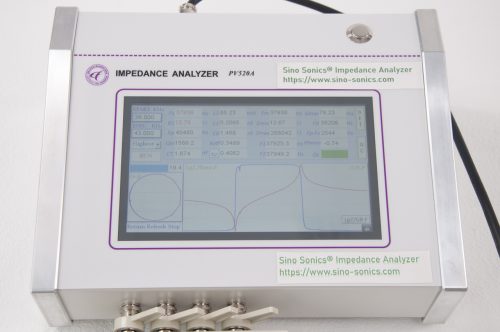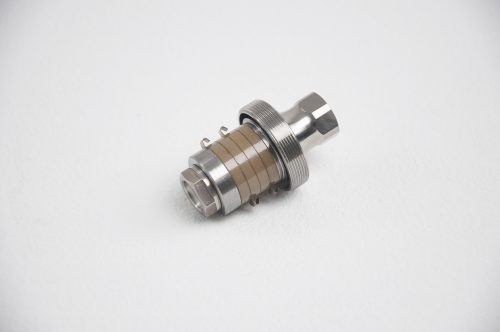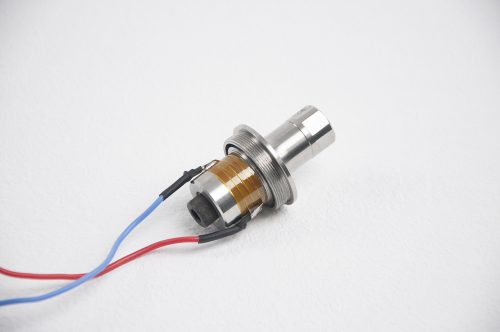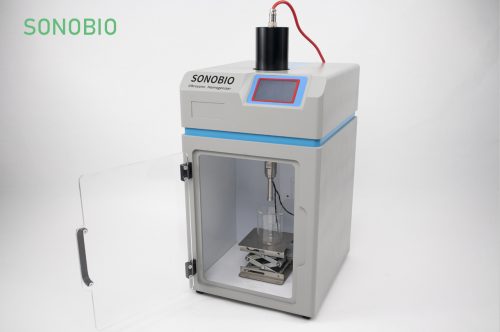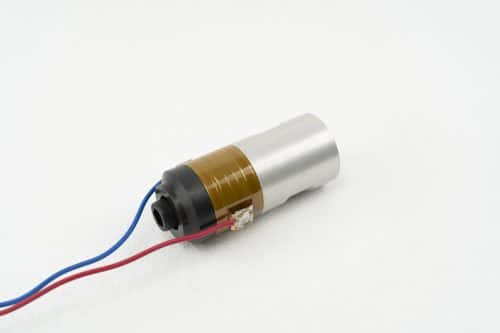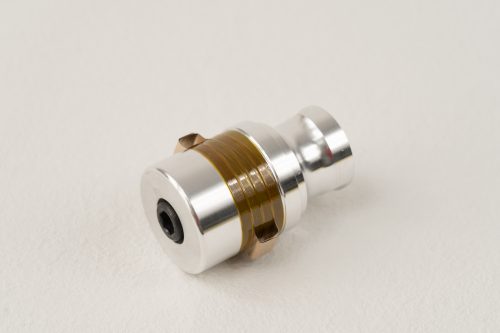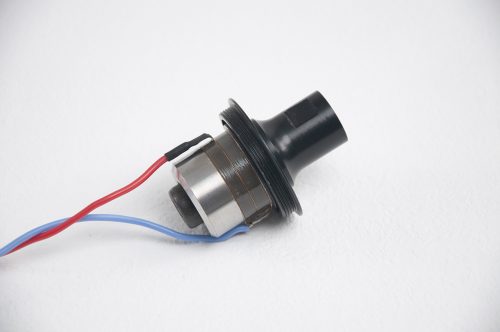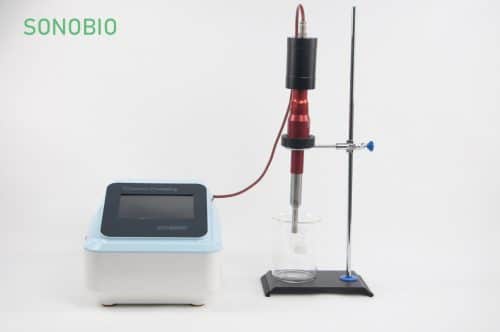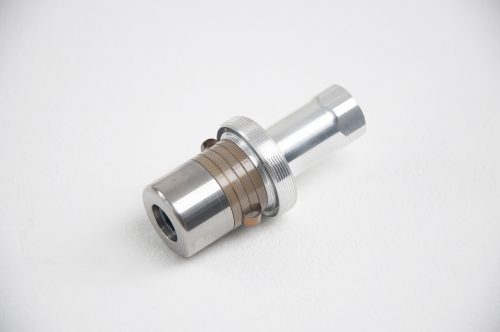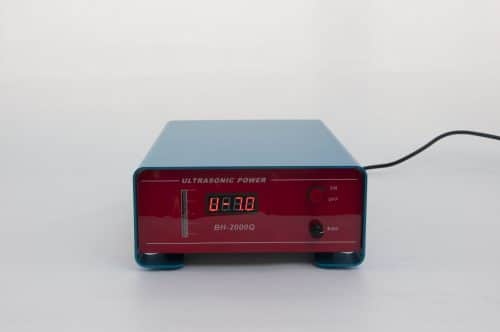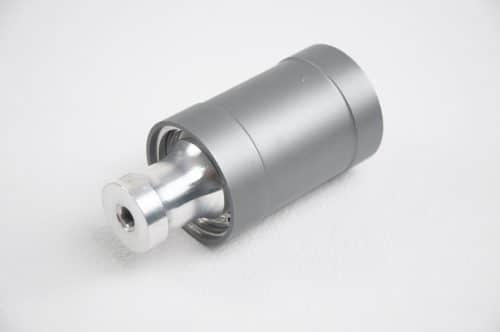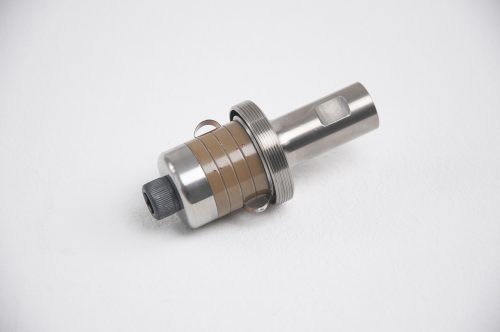PZT-5 Series are used in sensor applications and are characterized by their high coupling factors, high charge constants and low mechanical Q-values.
Applications for Piezo-ceramic Transducers
Distance sensors
Acceleration sensors
Flow rate measurement
Burglar alarms
Parking aids
Level senors
Knock sensors
Ultrasonic air transducers
Property protection
Sound pick-ups
Sensor Applications with Piezo-ceramic Components
A piezo-ceramic disc sends a short ultrasonic air wave in the direction of the object whose distance is to be measured. The sound wave is reflected by this object and received again by the same piezo-ceramic part. The piezo-ceramic part operates here as sender and receiver (time multiplex mode). The piezo-ceramic part normally has an adaption layer on the radiating side to match the acoustic impedance of the transducer to that of the air. The frequency used by the transducer (resonance mode) here depends on the desired range and the resolution. The higher the frequency, the higher the resolution and the shorter the range, and vice versa. If the wavelength resulting from the frequency is large in comparison to the size of the transducer, the result is a spherical-shaped radiation of the wave front. If the wavelength is shorter than the transducer, it is radiated straight (in a close angle). Directed radiation is desired in almost all cases. The distances that can reasonably be measured using these systems are between 0.25 m and 10 m. This application can be used for a variety of purposes in industrial automation, for example, for distance measurement, as a limit monitor or as a counter (an object is registered every time it passes through the measuring range).
Design: Round disc
Materials: PZT-51, PSnN-5, PLiS-51
A piezo-ceramic sensor plate transforms dynamic pressure fluctuations into electrical signals, which can then be processed accordingly. The pressure fluctuation is generated by a seismic mass coupled to the piezo-ceramic part, which applies force to the piezo-ceramic disc when the entire system is accelerated. This system is used for example in dynamic wheel balancing machines where every imbalance in the wheel generates a signal in the piezo-ceramic part. It is then possible to detect and quantify any imbalance in car wheels within seconds and to position appropriate counterweights.
Designs: Round disc, rectangular plate, ring
Materials: PZT-51, PSnN-5, PLiS-51
In ultrasonic flow rate measurement a distinction is made between two different measuring principles: the Doppler effect and the analysis of the traveling wave time. In both cases a piezo-ceramic transducer positioned on the tube wall generates ultrasonic waves, which are then transmitted into the liquid diagonally to the direction of flow. The Doppler evaluates the frequency shift of the ultrasonic waves, which are reflected by stray particles in the liquid. The greater the flow speed of the liquid, the greater the frequency shift between the radiated and the reflected wave front. Only one piezo transducer sending and receiving at different times is needed for this measuring method. The traveling wave time principle always employs two piezo-ceramic transducers positioned offset to the direction of flow. They send or receive alternately pulse-shaped ultrasonic wave packages against the direction of flow and in the direction of flow. In each case there is a superimposition of sound propagation speed and flow speed. The flow speed is then proportional to the reciprocal value of the propagation time difference in and opposite to the direction of flow. The advantage of this measuring method is that the measurement is independent of the sound propagation speed and therefore also the medium. This enables the measurement of both liquids and gases.
Design: Round disc
Materials: PZT-51, PSnN-5, PLiS-51
Burglar Alarms and Property Protection
Piezo-ceramic transducers are used in myriad ways in burglar alarm systems. For room protection, ultrasonic motion sensors are used in which a piezo-ceramic transducer sends out ultrasonic pulses and then picks up the reflected waves again. Every entry into the room as well as every movement within the room is detected. For the protection of property, small sensor plates are mounted on the property to be secured (e.g. on the shop windowpane). These sensors pick up the structure-borne noise and transform it into electrical signals. Sounds and vibrations caused by the intruder`s tools are enough to set off the alarm at the very beginning of the break-in attempt.
Designs: Round disc, rectangular or square plate
Materials: PZT-51, PSnN-5, PLiS-51
A piezo-ceramic transducer emits a short ultrasonic pulse, which is reflected by an obstacle before being received again by the same piezo transducer. The wave propagation time is used for calculating the distance to the obstacle. Sensors of this kind are used for example in trucks for exact detection of the distance to the loading ramp when the driver is reversing, or as parking aids in passenger cars.
Designs: Round disc, in part with wrap-around metalization
Materials: PZT-51, PSnN-5, PLiS-51
Level Sensors – Immersed Transducer Measurement
Level sensors are typically divided into two different measuring systems: Propagation time measurement of a reflected airborne ultrasonic signal by Piezo-ceramic transducers on the one hand, and immersed transducer measurement by piezo-ceramic sensors on the other. The self-resonant frequency of a metal tuning fork is excited by a small piezo-ceramic plate. This self-resonant frequency depends on the surrounding medium. If for example the tuning fork is immersed in a liquid or a powder, the resonant frequency of the system will change. This change in frequency is detected by the evaluation electronics. The disadvantage of this system is that no analog measurement is possible. The sensor only indicates whether it has exceeded or fallen short of a certain level. This drawback can be overcome by positioning several of these sensors at different levels in the tank. The advantage of the system is that the existing substance is very reliably detected and the sensor is largely insusceptible to interference.
Designs: Round disc, perforated rings other special forms
Materials: PZT-51, PSnN-5, PLiS-51
A knock sensor consists of a piezo-ceramic ring, a seismic mass and contact electrodes. The complete unit is attached to the engine block at an appropriate location. The engine vibrations accelerate the knock sensor and the seismic mass generates a force on the piezo-ceramic ring. The ring then generates an electrical signal equivalent to the vibrations in a wide frequency range. If the engine starts to [knock” due to lower octane gasoline or changing operating conditions, the signal is detected by the evaluation electronics and the ignition map is readjusted accordingly. This intelligent engine management allows combustion to take place very close to the knocking limit, which ultimately lowers fuel consumption.
Designs: Ring, round disc
Materials: PZTS8-7, PZT-51, PSnN-5, PLiS-51
A piezo-ceramic transducer emits a short ultrasonic pulse, which is reflected by an obstacle before being received again by the same piezo transducer. The distance between the transmitter and the obstacle can be calculated from the beam transit time. Such sensors are used in equipment and mechanical engineering and plant construction.
Designs: Round discs, in part with wrap-around metalization
Materials: PZT-51, PSnN-5, PLiS-51
Small piezo-ceramic sensor plates, e.g. mounted in the bridge of guitars underneath the strings, pick up the vibrations generated by the strings and convert them into electrical signals. These signals can then be electronically distorted, amplified or recorded – a solution that has had a lasting impact on rock and pop music. Piezo-ceramics act as a vibration sensor, which means they can be used in almost all music instruments.
Designs: Round disc, rectangular plate, square plate
Materials: PZT-51, PSnN-5, PLiS-51

